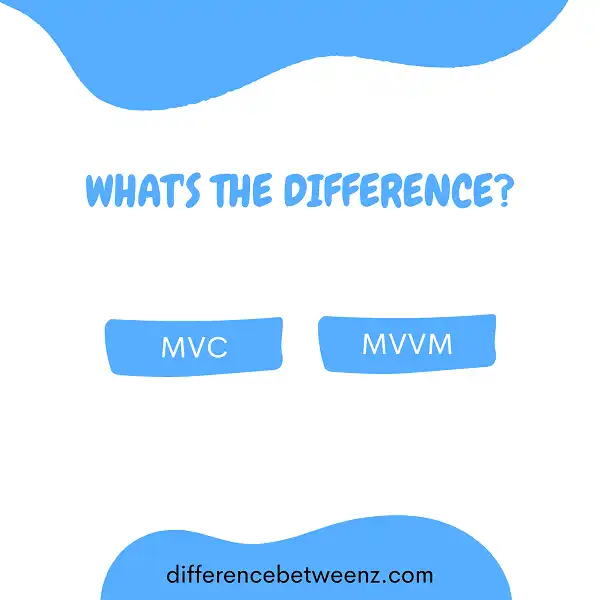MVC and MVVM are two popular patterns for developing applications. While they share some similarities, they have important differences. This article examines those differences and explains why you might choose one pattern over the other.
What is MVC?
MVC is an architectural pattern that separates an application into three main components: the model, the view, and the controller. The MVC framework provides a structure for developers to follow when building an application. The Model component is responsible for managing application data, the View component is responsible for displaying data to the user, and the Controller component is responsible for handling user input.
Each of these components can be further divided into smaller sub-components. For example, the Model component can be divided into a Data Access layer and a Business Logic layer. The MVC pattern enables developers to build applications that are easier to maintain and extend. It also allows developers to work on different aspects of the application simultaneously without affecting other parts of the code.
What is MVVM?
MVVM is a software design pattern that stands for Model, View, ViewModel. It is derived from the well-known MVC (Model-View-Controller) design pattern and is used for building user interfaces. The main difference between MVVM and MVC is that in MVVM, the ViewModel mediates between the View and the Model.
This means that it handles all of the business logic and data manipulation, leaving the View to simply display the data. As a result, MVVM can help to make code more testable and maintainable. It also allows developers to more easily bind data to controls in the View. In addition, MVVM can help to reduce code duplication by making it easier to reuse components across multiple Views.
Difference Between MVC and MVVM
MVC and MVVM are both popular software design patterns important for any aspiring developer to understand.
- MVC stands for Model View Controller – a time-tested architectural pattern for implementing user interfaces. MVC separates user interface logic from business logic by encapsulating related components in controllers, views and models.
- On the other hand, MVVM stands for Model View View Model, and it is a variation of MVC adapted to support UI development using XAML with data bindings. It combines the strengths of MVC while allowing developers to create simpler yet powerful applications that are easier to maintain over time.
Though they may appear similar on the surface, MVC and MVVM are two distinct architectural structures each with its own advantages depending on the goal of a project.
Conclusion
In this post, we’ve explored the difference between Mvc and Mvvm. We hope that after reading this article, you have a better understanding of which pattern is right for your project. Thanks for reading!


